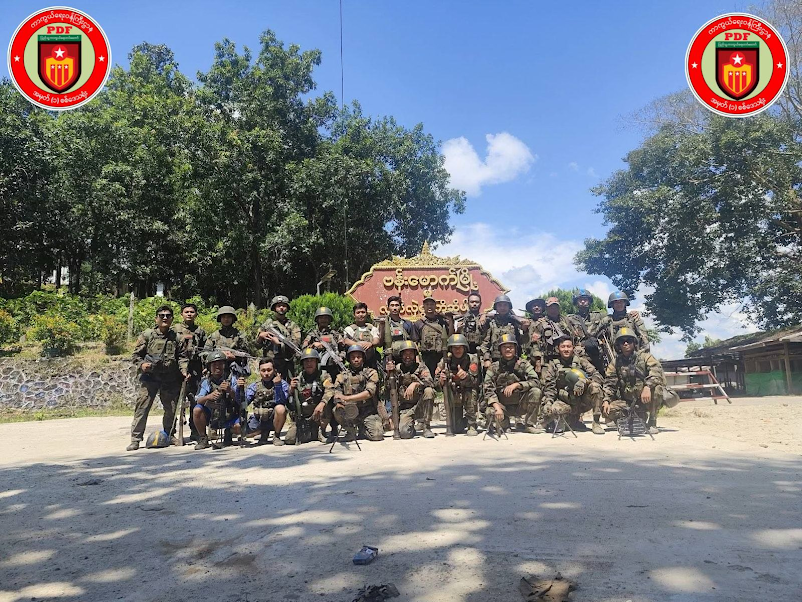Myanmar Spring Chronicle – View from September 21
(MoeMaKa, September 22, 2025)
After six days of fighting for Banmauk, resistance forces hold much of the town
In Banmauk (population 8,500+), Katha District, Kachin State, resistance forces launched an offensive on September 15 to seize the town. By day six they had entered and garrisoned parts of the urban area. However, in some sections SNA (the Shan-ni armed group) and junta troops remain dug in and are still resisting, according to several outlets.
Some reports say KIA units together with People’s Defense Forces under the NUG Ministry of Defense are attacking; others say the PDF/PAkHpa units (under MOD) are leading. As usual with wartime news, propaganda claims and on-the-ground facts do not always align.
Since yesterday there have been claims that the resistance now fully controls Banmauk and that SNA units have fled; other outlets concede entry into the town but say SNA remains in certain neighborhoods.
Banmauk—located in Katha District, Sagaing Region—is home mainly to Shan-ni and Kadu–Kanan communities. Because of the Shan-ni majority, the pro-junta Shan-ni armed group has maintained a presence in the town.
Shan-ni armed groups operate in parts of Sagaing and Kachin. In recent years they have also fought the KIA in places like Hpakant over territorial control. In the current Banmauk battle, some Shan-ni view KIA participation through an ethnic lens.
Within the broader anti-dictatorship war, ethnic armed organizations sometimes cooperate, but they also keep their distance or even clash when interests conflict. In Kachin and Sagaing, there have been frictions between SNA and KIA; in northern Shan, between KIA and TNLA, and between TNLA and SSPP/SSA, often over administration and control of territory.
Banmauk is administratively part of Sagaing Region (under both the socialist-era and 2008 constitutions), but demographically it is a town of Shan-ni and Kadu–Kanan peoples. PDF forces under the NUG MOD are strong in areas such as Kawlin and Indaw; they seized Kawlin in previous years and held it for months before the junta retook it.
Since announcing an election date, the junta has been using all available means to pressure the resistance politically and militarily. Backed by diplomatic support from China and India, and access to munitions and drone technologies, the military has gained advantages both strategically and tactically.
After suffering a string of defeats through early and mid-last year, the junta appears in 2025 to be clawing back in manpower, weaponry, tactics, and diplomacy.
It is currently conducting offensives in Kachin State, Kayah (Karenni), northern Shan, and Karen State, while in Bago and Ayeyarwady Regions it is on the defensive against AA forces. The junta seems to select targets on two bases:
-
Smaller towns it believes must be fought over to make elections feasible; and
-
Resource and revenue corridors—places and routes that fund the resistance through natural resources and taxation.
Of the 100+ towns the military has lost nationwide, in 2025 it has launched offensives around roughly ten, retaking some while fighting continues in others.
For their part, resistance forces are both holding the line against junta offensives and, as in Banmauk, mounting counter-offensives to seize territory.

